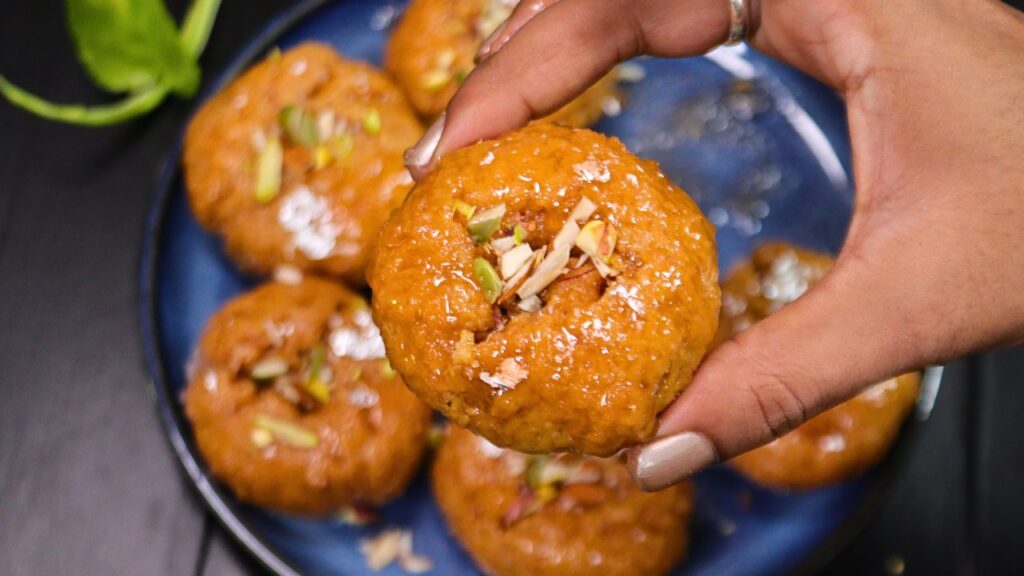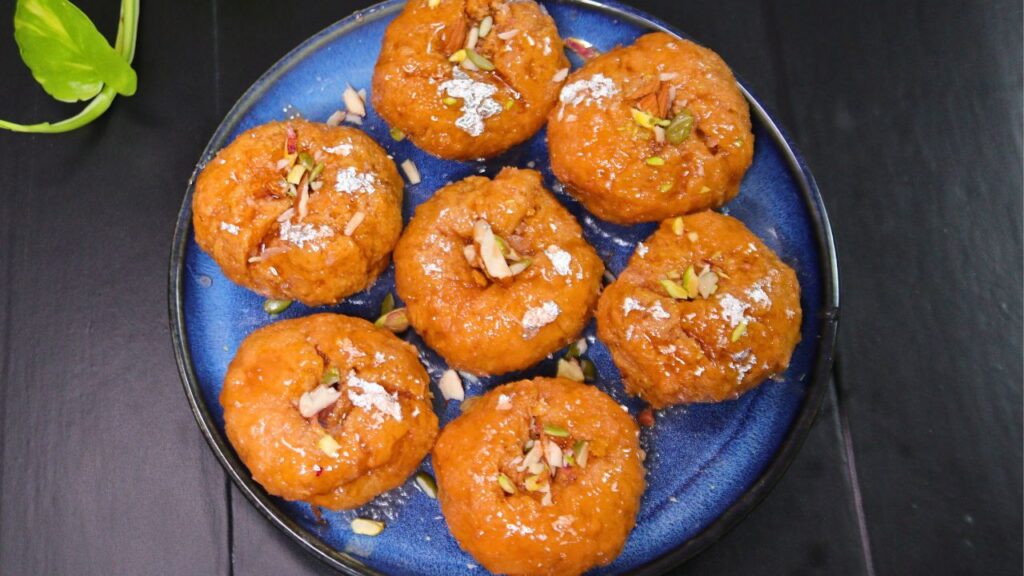



Balushahi is one of the most beloved Indian sweets, cherished for its rich, flaky texture and syrupy sweetness. This delightful treat, known for its deep golden hue and melt-in-the-mouth goodness, has been a mainstay in halwai shops and homes across India, especially during festive seasons like Diwali. Whether served at weddings, celebrations, or religious festivals, this indulgent dessert is sure to be a crowd-pleaser.
Making this dessert from scratch at home may seem like a challenge, but with the right recipe, it’s surprisingly simple and incredibly rewarding. The combination of basic ingredients like maida (all-purpose flour), ghee, and delicate sugar syrup creates an irresistible contrast of flavors and textures. This traditional Indian sweet, also known as the Indian doughnut due to its round shape and hole in the center, embodies the spirit of Indian sweets, making it perfect for any occasion, especially during Diwali or other festive celebrations.

Balushahi is often compared to the popular North Indian sweet badusha. The hallmark of this classic sweet is its flaky yet moist texture, achieved by frying the dough in ghee and soaking it in a cardamom-infused sugar syrup. Despite its simplicity, this sweet delivers a depth of flavor and a festive indulgence that sets it apart from other sweets. With halwai sweets like this being the pride of Indian cuisine, preparing it at home brings the joy of mastering a time-honored recipe.
While Balushahi might not be the healthiest sweet option, its ingredients offer some benefits when consumed in moderation. Ghee, for instance, is a rich source of healthy fats that promote gut health and nourish the body. Maida, while refined, provides the necessary structure to create the dough's signature texture. Spices like cardamom and saffron not only enhance flavor but also have antioxidant and anti-inflammatory properties. The key to enjoying Balushahi, like any festive sweet, lies in savoring it as an occasional treat.
During festivals like Diwali, Indian households are filled with the scent of Diwali sweets like Balushahi being prepared. Its sweet and slightly tangy flavor, derived from the sugar syrup infused with cardamom and saffron, makes it a delightful dessert for family gatherings. One of the best things about this sweet is its ability to stay fresh for days, making it an ideal sweet to prepare in advance for celebrations or to gift to friends and family.
Beyond Diwali, this sweet dish is a common feature at weddings, engagements, and religious ceremonies. Its festive appearance, often garnished with silver vark or chopped nuts, adds a touch of elegance to dessert tables.
Balushahi holds a significant place in the culinary heritage of India. Its origins can be traced back to the Mughal era, and over the years, it has become synonymous with festive sweets served on auspicious occasions. Across regions, this sweet has evolved with slight variations in flavor and texture, but the core ingredients and the method of preparation have remained largely unchanged. In some parts of North India, Balushahi is even offered as a prasad in temples, further emphasizing its cultural importance.
In homes, Balushahi is often made in bulk during Diwali and other festivals, sharing the joy of this sweet treat with neighbors and friends. Its firm, yet flaky texture provides a satisfying contrast when soaked in syrup, symbolizing the richness of Indian traditions and the togetherness that food brings during festive times.
While this sweet is easily available at local sweet shops, there’s something special about making it from scratch at home. By preparing this sweet recipe in your own kitchen, you can control the quality of ingredients and ensure that the sweetness is just right. Additionally, homemade Desserts are free from any preservatives, offering a fresher and more wholesome taste.
For those who enjoy the art of cooking, this sweet offers a fun challenge. The key is to achieve the perfect balance between the crispy exterior and the soft, syrupy interior, which can be easily mastered with practice.
Although the process of making this sweet is simple, a few tips can help ensure your sweet turns out perfect every time:
This sweet dish appeals to people of all ages. Its unique texture—crispy on the outside and soft on the inside—makes it a hit among both children and adults. The subtle flavor of cardamom and the delicate hint of saffron add a luxurious touch that’s appreciated by all.
This is a sweet recipe that has stood the test of time, loved by generations, and still enjoyed in modern households. By making this festive sweet at home, you’re not just creating a dessert but also carrying forward a piece of India’s rich culinary heritage.

Whether you're a seasoned cook or someone looking to try their hand at traditional Indian sweets, This sweet dish is a must-try recipe, especially during festivals like Diwali. Its flaky, melt-in-the-mouth texture combined with the sweet, aromatic syrup makes it an unforgettable treat. With the right balance of ingredients and a little patience, you can create this classic halwai sweet in the comfort of your kitchen.
For anyone looking to enjoy a true taste of India, Balushahi is the perfect way to embrace the sweetness of life, especially during festive celebrations like Diwali.
Your Balushahi is now ready to be served, with a perfect balance of flaky texture and sweet syrupy goodness!